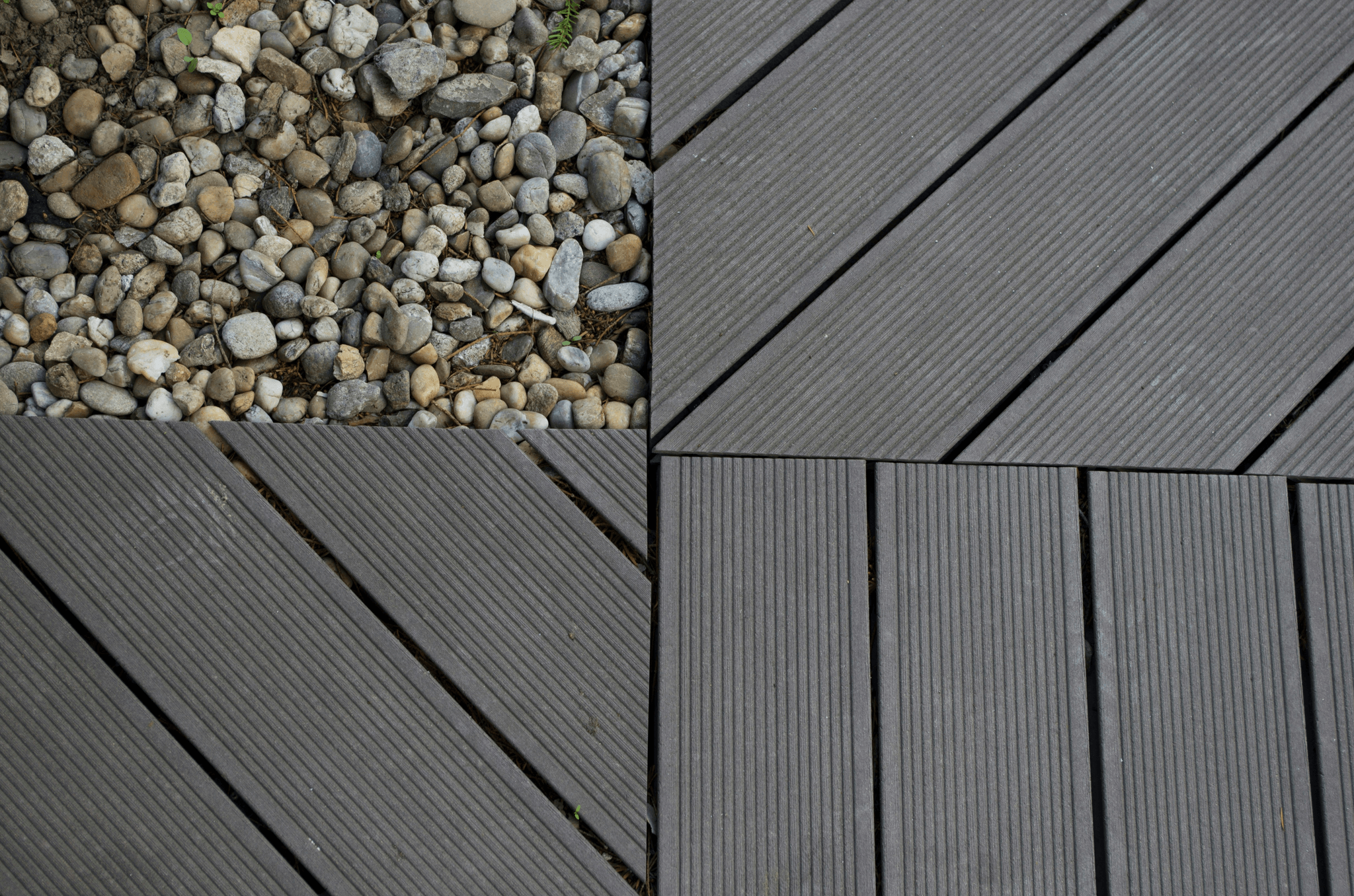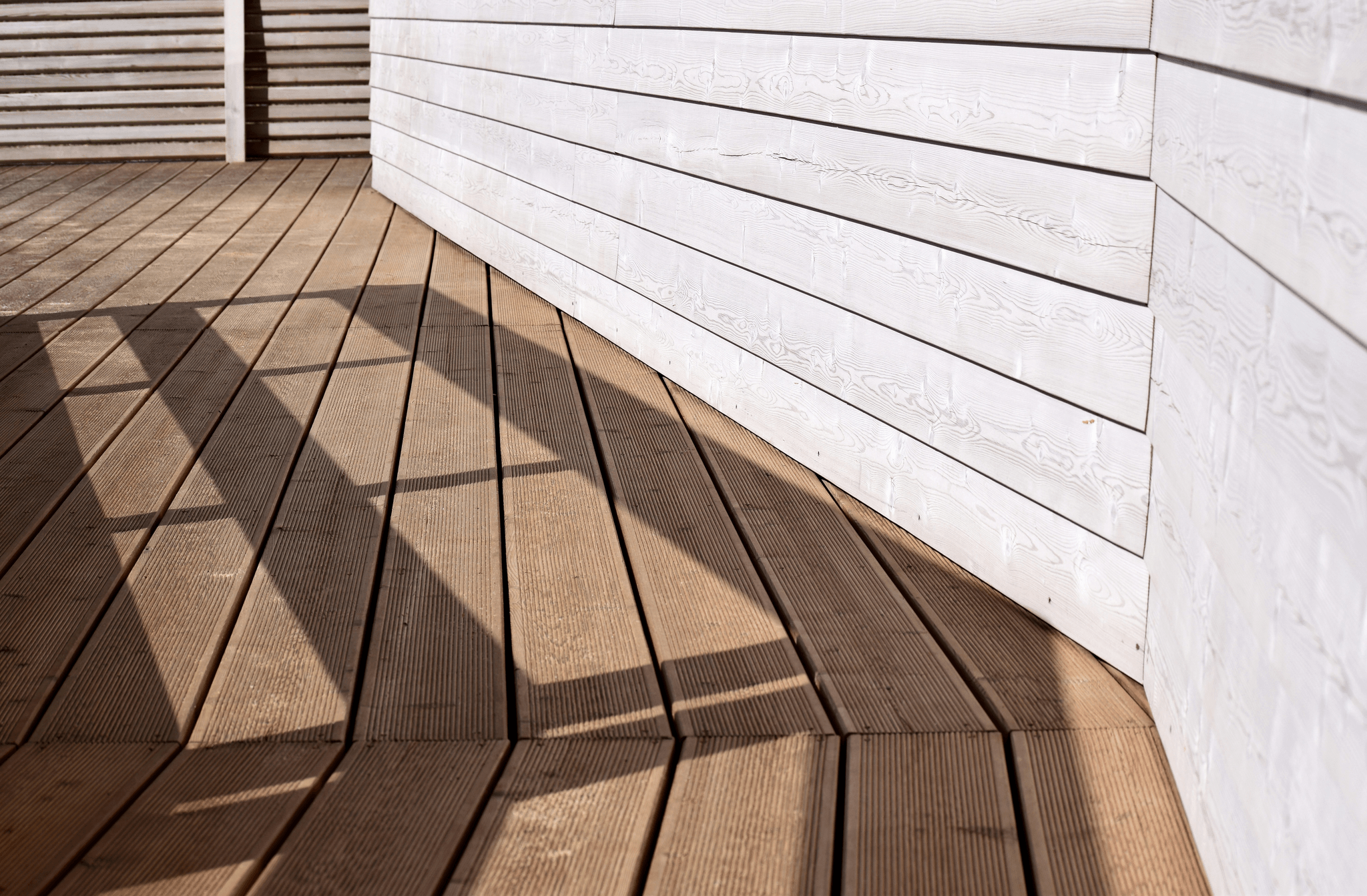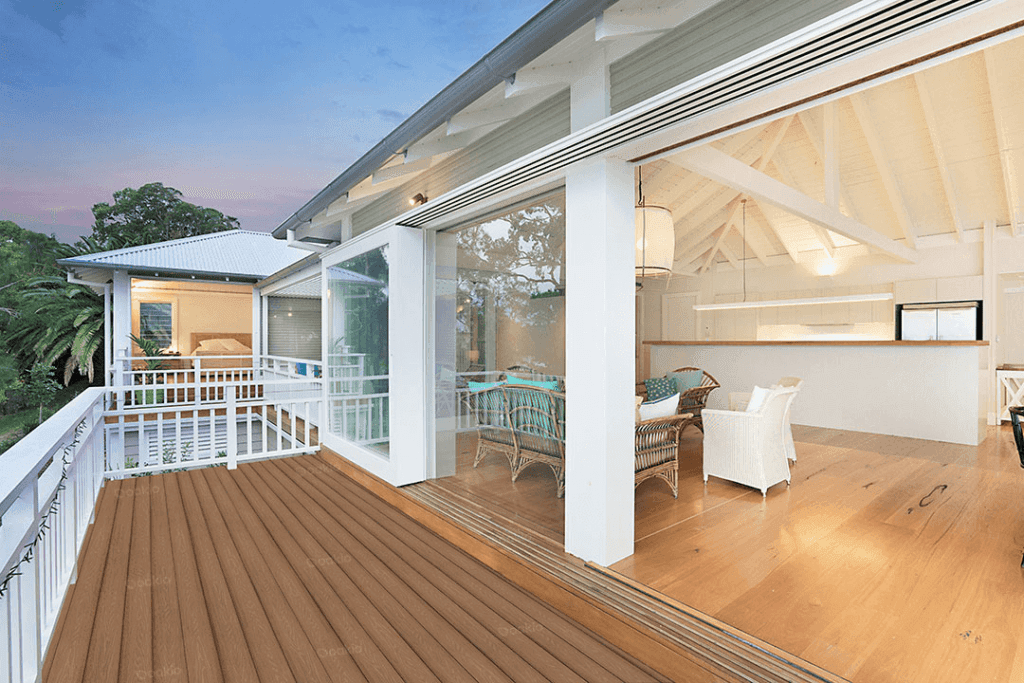Introduction
Composite decking has emerged as a popular alternative to traditional wood, offering a blend of durability and aesthetic appeal that is hard to resist. With synthetic wood options on the market, homeowners can enjoy beautiful deck boards without the hassles associated with natural lumber.
Why Choose Composite Decking
Choosing composite decking means opting for a solution that combines the best of both worlds: the beauty of wood and the resilience of modern materials. Unlike traditional wood, which can warp and splinter over time, composite lumber decking provides a sturdy surface that stands up to the elements. Furthermore, synthetic lumber for decks requires far less maintenance, freeing up your weekends for more enjoyable pursuits.
Benefits of Synthetic Wood Decking
The benefits of synthetic wood are numerous and compelling. For starters, composite deck boards resist fading and staining better than their natural counterparts, ensuring your outdoor space looks vibrant year-round. Additionally, artificial lumber is typically designed to be slip-resistant and splinter-free, making it a safer option for families with children or pets.
Overview of Composite Decking Options
There’s a wide array of composite decking options available today that cater to various styles and budgets. From high-end products with intricate designs to more budget-friendly choices that still deliver quality performance, there’s something for everyone in this market. Whether you’re looking for classic aesthetics or modern flair, deck composite decking offers versatility that can elevate any outdoor area.
Understanding Composite Decking

When it comes to outdoor living, composite decking has emerged as a popular choice for homeowners looking to enhance their spaces. This innovative material combines the best of both worlds—natural wood aesthetics with the durability of synthetic wood. In this section, we will delve into what composite decking is, how it’s made, and the various types available on the market.
What is Composite Decking
Composite decking refers to a type of building material made from a blend of recycled wood fibers and plastic. This combination results in a product that mimics the look and feel of traditional wood while offering superior longevity and performance. Unlike natural wood, which can warp or splinter over time, composite deck boards are designed to withstand the elements without sacrificing style.
As synthetic lumber continues to gain traction in outdoor design, many homeowners are turning to composite options for their decks. The versatility of composite materials allows for various colors and finishes, giving you plenty of choices to complement your home’s aesthetic. In essence, composite decking provides an appealing solution for those who want both beauty and practicality in their outdoor spaces.
Composition of Composite Lumber Decking
The composition of composite lumber decking typically includes two main components: recycled wood fibers and high-density polyethylene (HDPE) or polyvinyl chloride (PVC). These materials work together to create a robust structure that resists moisture damage while maintaining its appearance over time. The use of artificial lumber not only enhances durability but also promotes environmental sustainability by repurposing waste materials.
Additionally, many manufacturers add UV inhibitors and colorants during production to ensure that your deck boards retain their vibrant hues even after years of exposure to sunlight. This thoughtful composition means that you won't have to worry about fading or discoloration like you might with traditional wooden decks. When investing in synthetic lumber for decks, understanding its composition helps you appreciate why it's such a reliable option.
Types of Synthetic Lumber for Decks
There are several types of synthetic lumber available for deck construction, each catering to different preferences and budgets. The most common varieties include capped composites, which feature a protective layer around the core material that enhances durability while resisting stains and scratches. Another option is PVC decking; this entirely plastic alternative offers exceptional moisture resistance but may lack some natural aesthetics found in other composites.
In addition to these primary categories, there are also variations within each type based on texture and finish options available from different manufacturers. Some brands even offer customizable colors or patterns that allow homeowners greater freedom when designing their outdoor spaces with synthetic wood products like composite deck boards. Ultimately, understanding these types will guide you toward selecting the best fit for your needs.
Advantages of Composite Decking

When it comes to enhancing your outdoor living space, composite decking stands out for a multitude of reasons. Homeowners are increasingly opting for synthetic wood solutions, and it’s not hard to see why. From durability to aesthetic appeal, composite lumber decking offers a range of benefits that make it an attractive choice.
Durability and Low Maintenance
One of the most compelling advantages of composite decking is its remarkable durability. Unlike traditional wood, which can warp, splinter, or rot over time, synthetic wood is engineered to withstand the elements without losing its integrity. This means less worry about maintenance; you won’t need to sand, stain, or seal your deck boards year after year.
Additionally, composite lumber decking is designed with longevity in mind—many products come with warranties that span decades. This long-lasting nature not only saves you time but also money in the long run since you won't be frequently replacing or repairing worn-out materials. When you choose synthetic lumber for decks, you're investing in a product that can handle everything from heavy foot traffic to extreme weather conditions.
Aesthetic Appeal of Composite Deck Boards
Composite deck boards offer an impressive array of colors and finishes that mimic the look of natural wood without the drawbacks. Whether you prefer a rich mahogany hue or a sleek gray tone, there’s a synthetic wood option to suit every style and taste. This versatility allows homeowners to achieve their desired aesthetic while enjoying all the benefits associated with artificial lumber.
Moreover, many brands incorporate realistic textures into their products to enhance the visual appeal further. The result? A stunning outdoor space that looks just as inviting as traditional wood but without any of the upkeep hassles associated with it. With composite decking options available in various styles and designs, your deck can become a true extension of your home.
Resistance to Weather and Pests
Another noteworthy advantage is how well composite decking performs against weather extremes and pest infestations. Unlike natural wood—which can be susceptible to mold growth or termite damage—deck composite decking is crafted from materials designed specifically for resilience against these threats. This means you can enjoy your outdoor areas without worrying about costly repairs due to nature's wrath.
Furthermore, synthetic lumber for decks typically features built-in UV protection that helps prevent fading over time—a common issue with traditional woods exposed to sunlight year after year. So whether it’s rain or shine (or even snow), your deck will maintain its vibrant appearance while standing strong against Mother Nature's challenges. Embracing this level of resistance ensures that you'll spend more time enjoying your space rather than maintaining it.
Comparing Composite and Traditional Decking

When it comes to decking options, the battle between synthetic wood and natural wood is fierce. While traditional timber has its charm, composite decking brings a host of advantages that can make your decision easier. Let’s dive into the nitty-gritty of these materials to see how they stack up against each other.
Synthetic Wood vs. Natural Wood
Synthetic wood, or composite lumber decking, is engineered for performance and durability, making it an attractive alternative to natural wood. Unlike natural wood that requires constant maintenance, synthetic lumber for decks offers a low-maintenance solution without sacrificing aesthetic appeal. Plus, with a variety of colors and textures available in composite deck boards, you can easily find a look that suits your style without worrying about warping or splintering like traditional options.
Natural wood does have its fans who appreciate the unique grains and organic feel it brings to outdoor spaces; however, this beauty often comes at a price—literally! The upkeep costs associated with sealing, staining, and repairing natural wood can add up quickly over time. In contrast, once you've installed your composite decking, you can kick back and enjoy your outdoor oasis without constantly worrying about upkeep.
Long-Term Cost Analysis
When analyzing long-term costs between synthetic wood and traditional options, it's essential to consider both initial investment and ongoing maintenance expenses. Although the upfront cost of high-quality composite deck boards may be higher than that of untreated lumber initially, the savings over time are substantial due to reduced maintenance needs and longer lifespan of synthetic materials. With proper care (which is minimal), your composite lumber decking could last 25 years or more—far surpassing most natural woods.
Moreover, while you might pay less upfront for natural timber products like pressure-treated pine or cedar decks, they typically require regular treatments every few years to maintain their appearance and structural integrity. This recurring expense can significantly impact your budget in the long run when compared to the hassle-free nature of artificial lumber solutions. Ultimately, choosing composite decking not only enhances your outdoor space but also proves financially savvy over time.
Environmental Impact of Deck Composite Decking
The environmental impact is another crucial factor when comparing synthetic wood with traditional timber options. Composite decking often incorporates recycled materials—think reclaimed plastics mixed with sawdust—which helps reduce landfill waste while providing durable deck boards that stand up against Mother Nature's whims! By opting for synthetic lumber for decks instead of virgin timber products from trees harvested specifically for construction purposes, you're making an eco-friendly choice that benefits our planet.
On the flip side, natural wood has its own sustainability concerns related to deforestation practices if sourced irresponsibly; however, sustainably harvested woods do exist but may come at a premium price tag. Additionally, maintaining natural wooden decks often involves harsh chemicals that can leach into surrounding soil or waterways during cleaning processes—a concern that's largely mitigated with low-impact cleaning methods used on composite materials. In essence, choosing deck composite decking not only supports sustainable practices but also contributes positively toward preserving our environment for future generations.
Installation Tips for Composite Deck Boards

Installing composite decking can be a rewarding project, transforming your outdoor space into a beautiful retreat. However, to ensure your synthetic wood deck boards stand the test of time, it's essential to follow some key installation tips. Let's dive into the details of preparing your space, selecting the right fasteners, and avoiding common pitfalls.
Preparing Your Space
Before you start laying down those stylish composite deck boards, make sure your area is ready for action. Clear away any debris and vegetation from the installation site—nobody wants pesky weeds poking through their beautiful synthetic wood later on! Additionally, consider leveling the ground or adding a solid foundation; this will help ensure that your composite lumber decking remains stable and visually appealing for years to come.
Once you have a clean slate, think about drainage and ventilation. Proper water runoff is crucial when installing synthetic lumber for decks to prevent moisture buildup underneath your deck boards. This will not only prolong the life of your composite decking but also keep it looking fresh and new.
Choosing the Right Fasteners
Selecting suitable fasteners is just as important as choosing quality composite deck boards; after all, they are what hold everything together! When working with artificial lumber like composite decking, opt for stainless steel or coated screws designed specifically for synthetic materials to avoid rusting over time. This choice ensures that your deck remains secure without compromising its aesthetic appeal.
Remember that different manufacturers may have specific recommendations regarding fasteners based on their products' unique compositions. Always check these guidelines before making a purchase—it's worth it! Using inappropriate fasteners can lead to issues like warping or cracking in your synthetic wood over time.
Common Installation Mistakes to Avoid
Even seasoned DIYers can fall prey to common installation mistakes when working with composite lumber decking, so it’s essential to stay vigilant! One major pitfall is not allowing enough space between deck boards for expansion and contraction; this can lead to unsightly gaps or even warped boards in extreme weather conditions. Make sure you follow manufacturer guidelines regarding spacing—your future self will thank you!
Another mistake is failing to account for proper drainage during installation; inadequate drainage can result in water pooling under your deck and potentially damaging both the structure and surrounding area. Ensure that you plan accordingly by incorporating adequate slopes or drainage systems into your design process. Lastly, don’t forget about securing all edges properly; loose edges can lead to safety hazards down the line.
Maintaining Your Composite Deck

Maintaining your composite deck is essential to ensure its longevity and aesthetic appeal. While synthetic wood, such as composite decking, is designed to withstand the elements, a little care goes a long way in preserving its beauty. Regular attention will keep your composite lumber decking looking fresh and inviting for years to come.
Cleaning and Caring for Your Deck
Cleaning your deck boards regularly is vital for preventing dirt buildup and stains that can detract from the look of your outdoor space. For synthetic wood surfaces, a simple mixture of warm water and mild soap will do wonders; just scrub with a soft-bristle brush to remove debris without damaging the finish. Avoid harsh chemicals or abrasive tools, as these can harm the surface of your artificial lumber.
To maintain the beauty of your composite deck boards, consider using a specialized cleaner designed for synthetic lumber for decks if you encounter stubborn stains or mildew. Rinsing thoroughly after cleaning ensures no residue is left behind, which could lead to discoloration over time. With proper cleaning habits in place, you'll enjoy a pristine outdoor area that’s perfect for entertaining or relaxing.
Repairing Wear and Tear
Even with durable materials like composite decking, wear and tear can happen over time due to heavy foot traffic or exposure to harsh weather conditions. Fortunately, repairing scratches or scuffs on your deck boards often requires minimal effort; simply use a fine-grit sandpaper to smooth out imperfections before applying an appropriate touch-up product designed for synthetic wood surfaces. This quick fix can restore the appearance of your artificial lumber without needing extensive repairs.
If you encounter more significant damage such as warping or splitting in your composite lumber decking, it may be necessary to replace individual planks rather than attempting repairs that may not hold up long-term. Make sure you have extra deck boards on hand during installation so replacements are readily available when needed; this ensures consistency in color and texture across your entire deck surface. Remember that addressing wear promptly will maintain both safety and aesthetics in your outdoor space.
Seasonal Maintenance Tips
Seasonal changes bring specific maintenance tasks that help keep your composite decking in tip-top shape year-round. In springtime, check for any debris accumulation from winter storms—clearing leaves or branches will prevent moisture buildup that could lead to mold growth on synthetic wood surfaces. Additionally, inspect fasteners and connectors around the structure; tightening any loose screws helps maintain stability throughout changing weather conditions.
As summer approaches, give special attention to sun exposure since prolonged UV rays can fade colors over time if not protected properly—consider applying UV protectant products specifically formulated for composite lumber decking if needed! In fall, prepare for winter by ensuring drainage systems are clear so snowmelt doesn’t pool around the base of your artificial lumber structure during thaw cycles—a key step in preventing potential damage from freeze-thaw cycles.
Finally, don’t forget about winter maintenance: periodic shoveling of snow off deck boards prevents unnecessary weight stress while also protecting against ice formation which could lead to slips or falls later on! By following these seasonal maintenance tips diligently throughout the year with care focused on both cleaning methods as well as timely repairs when necessary—you’ll ensure lasting enjoyment of every moment spent outdoors!
Conclusion

In the ever-evolving world of outdoor living, the future is bright for composite decking. Homeowners are increasingly seeking sustainable and stylish solutions that enhance their outdoor spaces while requiring minimal upkeep. As trends shift towards eco-friendly materials, synthetic wood options like composite lumber decking are leading the charge in transforming backyards into beautiful retreats.
The Future of Outdoor Spaces
The future of outdoor spaces is undoubtedly leaning towards innovation and sustainability, with synthetic lumber for decks taking center stage. Homeowners want more than just a place to relax; they desire an extension of their lifestyle that reflects personal style while being environmentally responsible. With advancements in technology, deck composite decking continues to improve in aesthetics and durability, ensuring that these spaces remain vibrant and functional for years to come.
Why Composite Decking is Worth It
Choosing composite deck boards means investing in a product that offers exceptional value over time. Unlike traditional wood, which requires constant maintenance and treatment against pests and weather damage, composite decking allows you to spend more time enjoying your space rather than maintaining it. With its long lifespan and low maintenance needs, artificial lumber stands out as a smart choice that balances beauty with practicality.
The Role of Composite Decking Inc in Decking Solutions
Composite Decking Inc plays a pivotal role in providing high-quality synthetic wood solutions tailored to meet diverse customer needs. By offering a wide range of options in composite lumber decking, they empower homeowners to create personalized outdoor environments without compromising on quality or sustainability. Their commitment to innovation ensures that customers have access to the latest trends and technologies in synthetic lumber for decks, making every deck installation not just an upgrade but a lifestyle enhancement.
